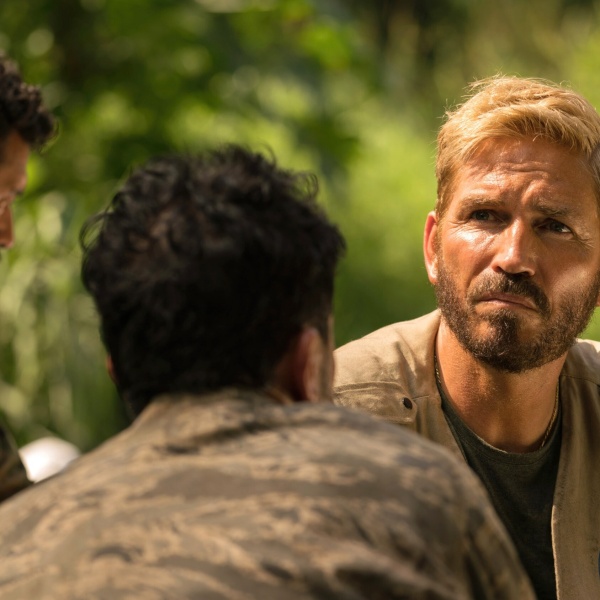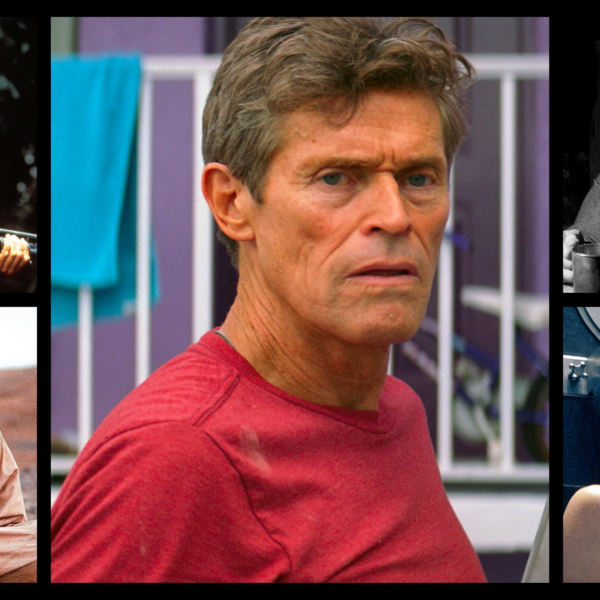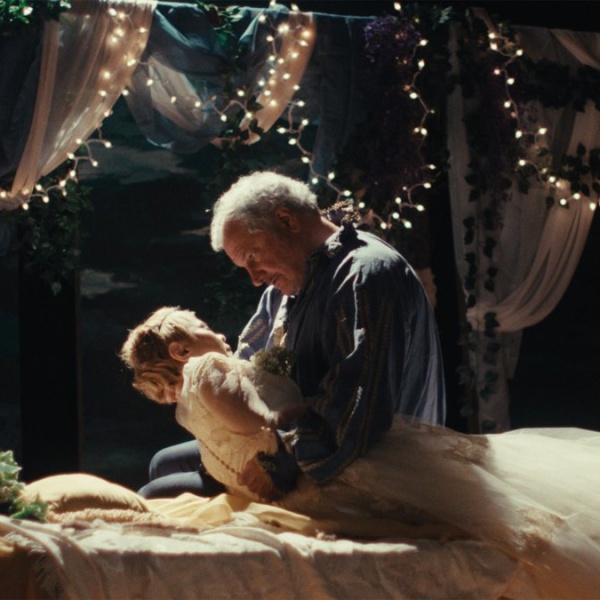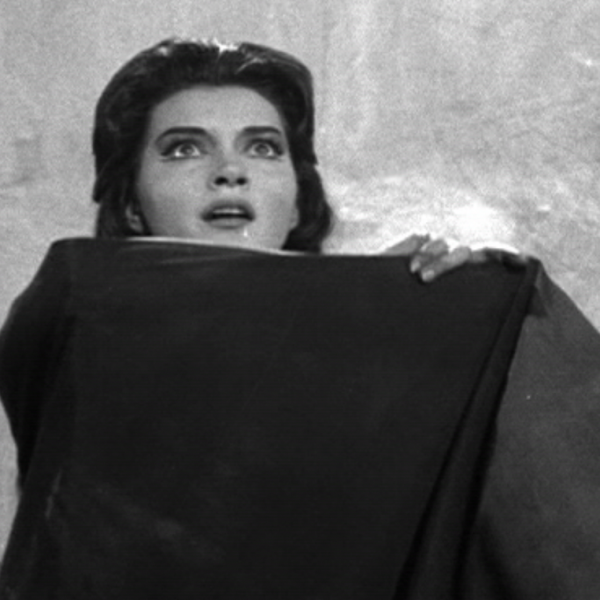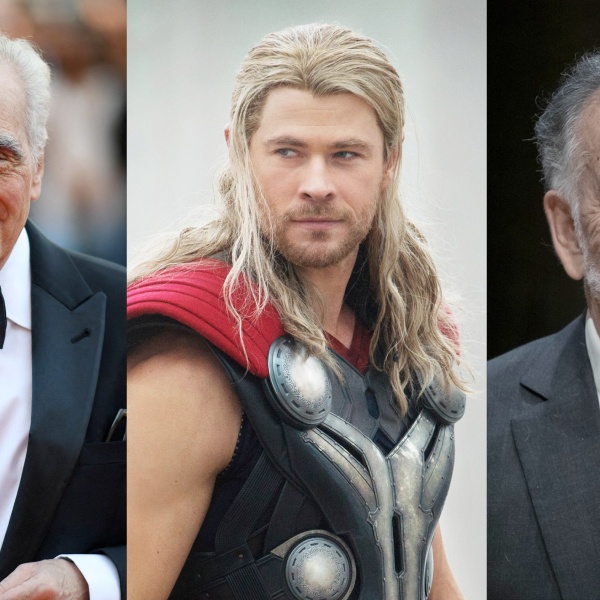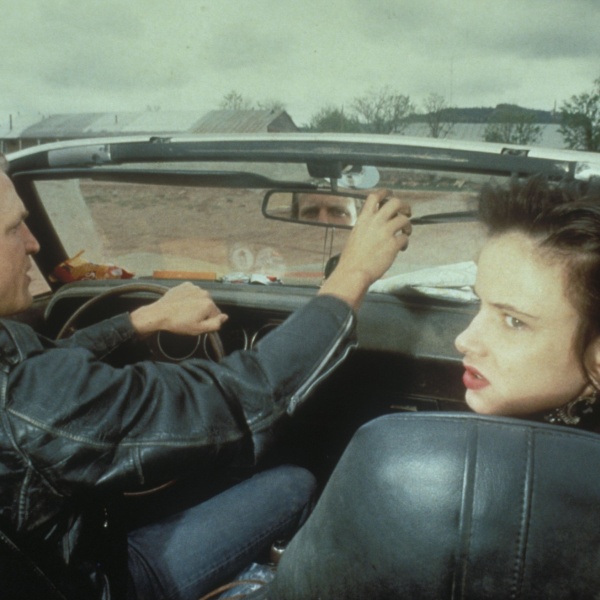When I talked to German writer-director Tom Tykwer and his “Run Lola Run” star Franka Potente on Zoom recently, Tykwer and I remembered our interview 25 years ago when Sony Pictures Classics (SPC) released the movie the first time. (Not that I could find that interview online.) It became a word-of-mouth hit all over the world, scoring $22.9 million worldwide. “It was one of our top movies,” said SPC co-president Michael Barker on the phone. “Our goal has been to find movies that stand the test of time. It was one of the first movies with English subtitles that the younger generation turned out for.”
“Run Lola Run” premiered at the Venice Film Festival in 1998 before opening in the U.S. in early 1999. Now, SPC has orchestrated a 4K restoration coming to 250 theaters on June 7, following the success with younger audiences of such recent classic reissues as A24’s “Stop Making Sense” and SPC’s “Amelie.” With older audiences stalled at arthouses, luring a younger crowd is one way to generate box office. “Young moviegoers want to see these older titles in theaters,” said Barker.
The avant-garde “Run Lola Run,” daring in its day, is still hugely fun to watch. That’s because Tykwer filmed a 21-year-old flame-haired actress running. And running. And running. That propulsive energy fuels the movie, as Lola has 20 minutes to save her gangster boyfriend Manni (Moritz Bleibtreu) from ruin. The movie lays out several alternate scenarios as Lola runs through Berlin to somehow grab 100,000 Deutsche marks in cash and catch her man before he desperately holds up a bank.
This interview has been condensed and edited for clarity.
Anne Thompson: Tom, when you cast Franka, who is so wonderful to watch in this, did you need her to be an athlete, a runner? What was required of her?
Tom Tykwer: It’s so funny that I even remember this, exactly. I didn’t think about it at all, in the beginning. I saw another movie that she had made before. It’s something instinctive. I don’t even think we had a casting agent on the movie. But I had seen her, and thought, “This is her,” and then we met, and it clicked immediately. Then I thought, “Oh, what if it doesn’t look good? What if she can’t run?” I was a young director. Later I learned that there’s quite a few actors who can physically run but it doesn’t look very good. It looks strange or awkward, they’re just not sportive in some way.
Franka, did you look at the script and realize what was going to be required of you and go, “Oh, I better get in shape?”
Franka Potente: I was 21 or 22 at the time. So I was quite stupid. I didn’t get the title alone. And I read it. I was probably smoking two packs of cigarettes a day then. I’m now way more fit than I used to be. So: ‘Oh, no problem.’ It didn’t even cross my mind. I did realize that there was running involved. There was way more, by the way, than is on the page. Because we had to run for sound and rehearsals and, oh my god, there was so much running in Doc Martens. There’s like five pages of dialogue on the phone. ‘Then Lola runs.’ Yeah, she crosses the city and arrives at the bank. It’s like, three lines. That’s it!

How long did it take to shoot the actual running?
Tykwer: It was days and days of running. And Franka, in the breaks, was sitting there smoking cigarettes. We did a test because we had to figure out these weird things. If she runs, we won’t be able to block entire streets and stuff. And we needed to figure out a way to drive next to her because what I also underestimated was how fast Franka was running — really fast. So no bicycle devices; it had to be something driven, and solid. I always had it in my head that she would be running from left to right, because that’s somehow how you imagined strong movement. Because it’s also like the writing of the movie, or the way we read. But you can’t shoot it because the street side is huge. We’re driving on the right side. And then there’s the boardwalk. So we could only run from right to left. My mind was like, “Ugh, doesn’t it feel backwards? Something’s wrong.” And then the great thing about this is, in a way, she is running backwards, because you do the shots over again. So it did make sense at the end.
You had this image of a woman running; this was the first nugget of an idea, and you wrote the whole script around that?
I was obsessed, and I still am, with thoughts about “what if?” and chance and coincidence and free will. I was also into philosophy then and into action movies. Somehow, I stumbled upon this idea that it could come together, and the running woman was such an attractive idea. What do we really want to see in cinema? You want to see energy, you want to see physicality, and you want to see emotional expression. And it was all in there. So let’s figure it out.
Franka, how did you map out your running day?
Potente: The trick is to make it look fast. I was running much slower if there’s a Steadicam in front of you, or like some device next to you, behind you. The whole shoot was vital and energized. I had the time of my life, it was wonderful. After all these years, anything that I work on, you still go back to these few experiences that set the bar so high. That, unfortunately, doesn’t happen all the time. Tom would come in the morning almost every day to me and Moritz, we would pace out the day, almost like an endurance runner. You set up this energy; you’re always joined in. I was never alone. I could draw energy from so many sources, because everyone was so excited to be working on the film. It didn’t feel like work. It was some huge big Berlin adventure. It felt spontaneous.

Any accidents along the way?
Potente: It was never careless. It was shot with the utmost care and focus [on] detail. We were looked after.
Your careers both took off from there. Tom, you have made a career in Germany and Hollywood with films (“Perfume: The Story of a Murderer”) and TV series (“Sense8” and “Babylon Berlin”). Franka moved to Hollywood, starred opposite Matt Damon in the first two “Bourne” movies, and never stopped.
Potente: “Lola” changed my life and changed my trajectory, for sure. Without wanting to sound cheesy, it goes back to that energy: what we made carried through. Look at where we are today. What the fuck! We’re here 25 years later!
Who started that digital restoration process?
Tykwer: Sony Classics had their 30-year anniversary in January. They wanted to release something special on Blu-ray and they created a box of their most beloved films, and we were one of them. And for that occasion, we discussed, “Shall we give you the most glorious, new transfer possible?” And that’s how it all happened.
You were closely involved?
Tykwer: It was Frank Griebe, [who is] the DP, and me. We both did it. Frank sat down every day. And then I came in and checked it. There was some work to be done, nerd stuff. One of my absolute favorite shots did have a scratch in the negative: “You can’t use it.” And I said, “I can’t lose it. It’s such a beautiful shot. I don’t care.” There’s this correction in the picture. So for 25 years, there was this massive scratch in this one running sequence, which we now could take away. I love it, that it’s gone. And I love the future. Because it’s not about prettifying things. It’s better. I like this better than the original movie now.
What did you think when you saw the restored movie for the first time?
Tykwer: I hadn’t seen it for a long time. And when this new transfer was created recently — it’s fresh. The movie looks better than it has ever looked. We wanted to see it in a nice theater. I invited everybody I know. “Let’s see how many people show up.” And it was packed, all these people at an 11 a.m. screening on a Sunday. And the energy was incredible. I only have fond memories of the experience. We were so young, and we were so ruthless. And it was pure joy.

But also, I’m not that guy anymore. I look at it as this thing, which, for a filmmaker, takes a while until you just look at it. And there’s this strange work of art that somebody who resembles you did? I could, for the first time in my life, just see the movie. I was so glad and so excited that it was so joyful. The energy in the room was amazing. And I still feel also that Franka was such a gift. I couldn’t believe it, because then I obviously also saw it, but it was much more in the moment, and now, I saw the glory of it all, but also that there’s a movie about Berlin that people can relate to today, because Berlin never stops being a construction, being unfinished, this contradictory mess. Also, this punk girl whose father is a manager, all these absurd ideas, everything makes sense in the movie, even the absurdity of things.
How did you distinguish each sequence with music and shot choices?
Tykwer: I’ve always worked on the music of my films. Early on. But on this one, it was a long process because I still felt like a beginner. And the more we got closer to understanding what the film was becoming, the more obvious it became that the music had to always have an individual character for each sequence, but also that we needed to get Franca in there. So there wasn’t a plan from the beginning that she would be singing and performing and ultimately, even my voice is in there, and it was mostly fine. But her voice is important, a part of the fabric of the music. That was something that we discovered only because we realized, it’s a mind-tricky movie. It has a lot of ideas, but she’s carrying it; she’s the reason the movie will work because everybody relates to her so profoundly. You get married to her for the film. And so everything was pointing to “Franka is the music. Franka is the spirit.”
You play with the color red: the red phone, the red wig, the red scenes in which Franka looks glammed up.
Tykwer: We tried wigs in blue and yellow and all kinds of weird colors. But for some reason, red was it from the beginning. We wanted the film to remind people also of the energy that the Nouvelle Vague cinema had in the ’60s on cinema itself, the whole radical attitude to just go and start the reinvention of the narrative. No other color did this … everything else was too artificial. The red felt “it’s still her real hair.” If it was blue, it wasn’t.
It was radical to use both 35mm and video in the same movie, even colliding with each other in some scenes.
Tykwer: We started on Beta, which was the video format of bad television, because I wanted the difference between when Lola was present to be glorious, because she’s inventing our beautiful world, and the rest of the world to be lame and ugly and looking like bad early afternoon television. So we started on this television format, and you bring it back to 35 mim. We took a bad monitor and finished it from the monitor again. So it’s really bad quality. It was a completely theoretical idea, which hardly anybody understood. I still get questions. “Why is it sometimes such bad quality?” For me, it was always clear that when you have Lola’s father’s in the banker’s office with his lover, and you see the video, and then Lola opens the door, and the film changes so much, the quality of the image. I thought that might at least bring half the audience to an idea of that but I think it’s one percent who got it?
Was Krzysztof Kieslowski an influence, with his 1987 triptych film “Blind Chance”?
Tykwer: Yes. It’s a similar concept about missing a train. “What if you take this path, or this part of this puzzle?” Our construction is far more complicated, with all these little detours that the story takes, also with the characters that Lola meets along the way. It’s a storytelling device, that, at the same time, also reminds you that you and your life are constantly making choices, and they will influence everything else that happens afterwards. And that at the same time, that’s also the case of storytelling, you take a choice. Then, especially when you write TV shows, which I also do now, there’s this moment when you took a choice, and only two episodes later, you realize, “Oh, God, I took that choice. And now this character has to die.”
“Run Lola Run” plays again in theaters from Sony Pictures Classics beginning June 7.

